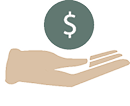Appendix 3: Snapshot of key activities and programmes in Auckland, 2020 to 2022
Reporting on the public sector’s performance in Tāmaki Makaurau Auckland.
| Sector | Key activities |
|---|---|
Health |
The Northern Regional Long Term Investment Plan was developed to identify necessary capital investments in primary care facilities in Auckland. The Care Capacity Demand Management programme was initiated in Auckland to provide safe care and create a better working environment for health care workers. Te Ranga Ora is an equity-focused programme that aims to improve health experience and well-being outcomes for Māori, Pasifika, and people living in deprived areas in the Counties Manukau catchment. |
Education |
The Auckland Regional New Build Pipeline was initiated by the Ministry of Education to build 13 new developments at schools in the Auckland region. The Ministry’s Capital Works team manages this directly. The programme’s budget is $325 million. The attendance service is a programme that will support schools to effectively manage attendance, reduce unjustified absence rates and non-enrolment, and reduce the time taken to return students to education. A trial of this programme has taken place in Kawerau and South Auckland. The Ka Ora, Ka Ako Healthy lunches Programme provides free lunches to 172 schools in Auckland. The programme aims to reduce food insecurity by providing nutritious lunches to students at schools and kura. |
Social |
Caring in the Community was a support programme to all individuals, whānau, and communities at greater risk of experiencing adverse health, social, or economic outcomes as a result of the Covid-19 pandemic. The South Auckland Social Wellbeing Board leads “place-based initiatives” from 13 government agencies. The initiatives are focused on developing ways to meet the complex and diverse needs of whānau. |
Housing |
Public Housing Development: Kainga Ora is seeking to increase public housing supply throughout the country. It intends to supply more than 8500 additional public and transitional homes in Auckland between 2018 and 2024. Large Scale Development: Kainga Ora has an urban development role and is embarking on several large-scale regeneration projects to deliver about 35,400 new houses in the Auckland region (this also includes an element of Kainga Ora’s public housing programme). |
Justice |
Tāmaki Makaurau – Policing for the Future was set up in April 2020 to explore opportunities to optimise policing throughout the region. The establishment of the new Assistant Commissioner is part of ongoing plans for a new structure for Auckland. Whāngaia Ngā Pā Harakeke is a Police-sponsored initiative, where the Police and local iwi work in partnership to reduce family harm. The programme was rolled out in the Counties Manukau District and has been expanded into Auckland City. Te Pae Oranga is an iwi community justice panel at Hoani Waititi Marae in West Auckland. It is the first iwi panel in the Waitematā police district, which means all three Auckland policing districts now have access to the restorative justice initiatives. |
Transport and infrastructure |
The New Zealand Upgrade Programme: Auckland package provides multi-billion investments in Auckland to provide greater travel choices and safety, and support the economy. The Auckland package’s projects include Penlink – planning for growth in the north of Auckland, South Auckland projects to improve rail and roading infrastructure, and Auckland rail projects to support urban and economic growth. The City Rail Link involves building a 3.45km twin-tunnel underground rail link connecting Britomart and Mount Eden Station. Two new underground stations will be built at Aotea and Karangahape Road. Mount Eden Station will be redeveloped, and Britomart will become a two-way station. Auckland Light Rail was set up as a Crown entity to develop a business case to enable the Crown to make a final investment decision about Auckland Light Rail. |
Economic |
Reactivating Tāmaki Makaurau, initiated by the Government, provided $37.5 million to help revive economic, social, and cultural activities in Auckland in 2021. Auckland also received funding of $1 million from the Strategic Tourism Assets Protection Programme. The Tāmaki Makaurau Regional Skills Leadership Group has produced several local insights reports and recently a Regional Workforce Plan. Supported by the Ministry of Business, Innovation and Employment, members of the group include iwi/Māori, regional industry leaders, economic development agencies, and community and government representatives. |
Environment |
The Waste Minimisation Fund focuses on accelerating transition towards a low emission and waste circular economy. In Auckland, 40 projects by 36 organisations were funded between 2020 and 2021. The total funding approved for Auckland was $37.86 million. Jobs for Nature was established to help revitalise communities and stimulate the economy after the Covid-19 pandemic through nature-based employment. Twelve initiatives in Auckland have received funding. Predator Free 2050 aims to eradicate pests and predators in Kawau, Waiheke, and Great Barrier Island. |
Government and administration |
Water Services Entity A: As part of the Affordable Waters Reform, the Department of Internal Affairs has been leading the programme to establish a new entity to amalgamate Watercare and Auckland Council’s stormwater department (Healthy Waters), along with the councils in the Northland region. Extreme Weather Response and Recovery: The central government response to the 2023 floods caused by Cyclone Gabrielle is led by local civil defence and supported by the National Emergency Management Agency. A Ministerial lead has been allocated to support recovery efforts in Auckland. |

